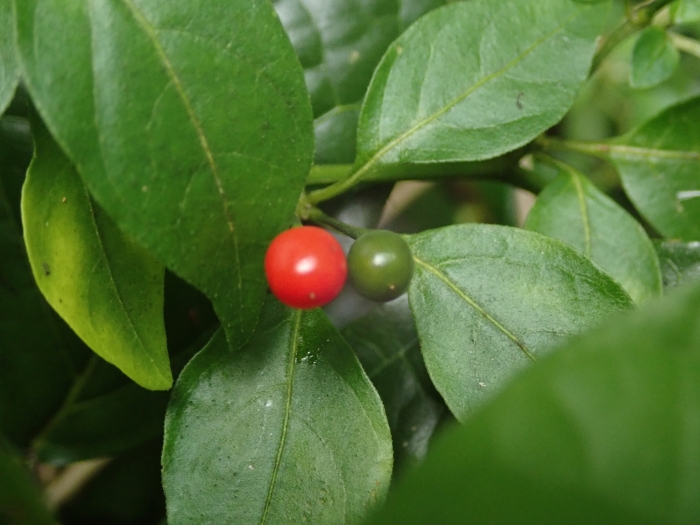Chile Pequin
(Capsicum annuum var. glabriusculum)
Chile Pequin (Capsicum annuum var. glabriusculum)
/
/

Daniel Cahen
CC BY 4.0















































Estimated Native Range
Summary
Chile Pequin is valued for its ornamental appeal, culinary uses, and its ability to attract wildlife, such as birds that feed on the peppers. It is often used in gardens for its bright, showy fruits and as a natural source of spice. In cultivation, it requires full sun exposure and benefits from high levels of water, preferring soils with medium drainage. While it can be a challenge to grow in non-native areas due to its heat and water requirements, it is a resilient plant that, once established, requires minimal maintenance. Gardeners should be aware that the peppers can be a skin and eye irritant, and appropriate care should be taken when handling them.CC BY-SA 4.0
Plant Description
- Plant Type: Herb
- Height: 3-6 feet
- Width: 2-5 feet
- Growth Rate: Moderate
- Flower Color: White
- Flowering Season: Spring, Summer
- Leaf Retention: Evergreen
Growth Requirements
- Sun: Full Sun
- Water: High
- Drainage: Medium
Common Uses
Bee Garden, Bird Garden, Butterfly Garden, Deer Resistant, Drought Tolerant, Edible*Disclaimer: Easyscape's listed plant edibility is for informational use. Always verify the safety and proper identification of any plant before consumption.
Natural Habitat
the understory of forests and in scrublands of Mexico, Central America to northern South America
Other Names
Common Names: Chile Petin, Bird Peppers, Bird’s-Eye, Turkey Pepper, Chilipiquin, Chiltepe, Chiltepin, Piquin, Chiltepinpeppar
Scientific Names: , Capsicum annuum var. glabriusculum, Capsicum annuum var. aviculare, Capsicum campylopodium, Capsicum annuum var. minus, Capsicum chlorocladum, Capsicum conoides, Capsicum annuum subsp. minimum, Capsicum hispidum var. glabriusculum, Capsicum frutescens var. minus
GBIF Accepted Name: Capsicum annuum var. glabriusculum (Dunal) Heiser & Pickersgill